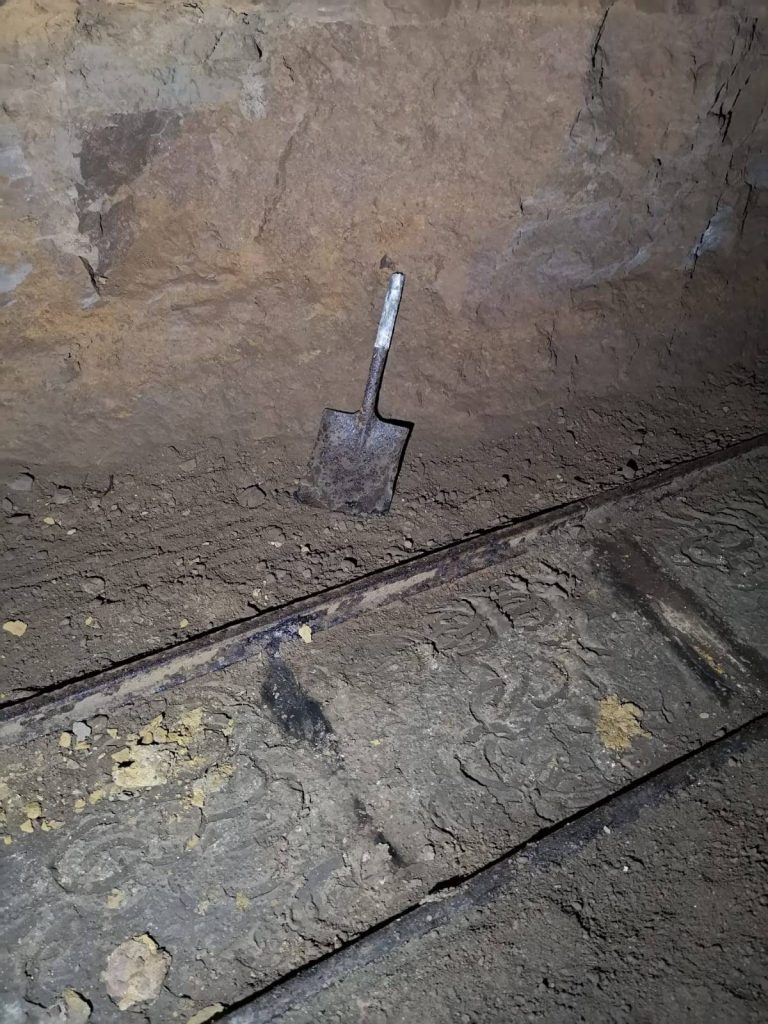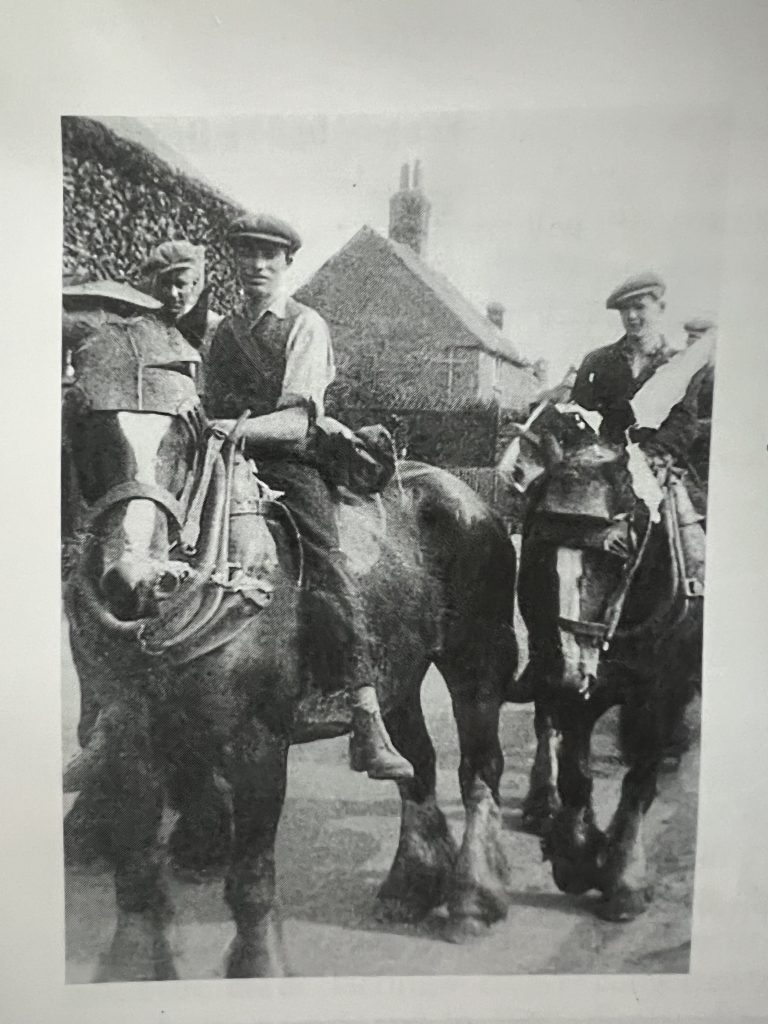Willow Close mine itself is not just the mine, it’s a slightly more complicated story which begun in 1890. In 1890 surface excavations started at 2 sites in the village of Islip, one was called Crops Acre the other was Willow Close. They were both served by their own independent tramways. There are no details of outside buildings, I personally believe these would have had a external stables most likely 3 brick walls with a tin roof, a managers/foreman office again a simple tin roof building and possibly a small workshop, most of the mines in the area had these. The size of the mines would also of required more than 1 horse, I believe this would have required 4 horses possible 2 larger for main haulage roads and smaller for the working faces ? again this is a assumption but horse prints in the mines very in sizes and are very common to find. We have 1 personal account and have built our assumption from this.
In 1902 mining in Willow Close started due to the over burden issue, by this time a heading was already being driven in the Crops Acre surface mine, the date this was started is unknown. Each set of workings had its own entrances & ventilation systems, Being side by side the surface mines entered the same iron ore bed, It was only going to be a matter of time before they joined into a single mine, the exact date this happened is unknown. By 1932 ore being won in Crops Acre was now to exit through the Willow Close adit, why this changed is unknown. One theory is this is when the trial of the locomotive came in, Willow Close & Crops Acre had a single locomotive for a unknown time frame, this was the most powerful of the 5 in use in the Slipton ore field, it was a 3 cylinder engine number 168841. When this site changed to only using the Willow Close adit , the workings was known only by the name Willow close. In 1936 all production ceased and the mine entrances were bricked up, many years later in 1977 the blue brick ventilation chimney was knocked down.
An account from the mines.
Mr Harold Ruff born 1907 of Brigstock worked in the Willow Close & Crops Acre mines, He wrote down his accounts of what he saw & the working conditions. Each group of miners (2) had to load 7 wagons per shift and a fine was imposed if they were incorrectly loaded “this usually is over loaded incase of damaging the horses ” You had to provide your own lamps. Paraffin in the early days and carbide in the later, also you had to bring your own tools, shifts were 7am-3pm . Shot firers had to provide their own explosive, this was a tricky job too, little caused more pickaxe work and too much powder caused a massive mess over the heading and a wastage of ore. While Harold R worked the mines there were 7 groups of (2) working Willow Close with 3 horses & 3 pairs of (2) working Crops Acre with 1 horse. All miners had brass tags which they collected in the mornings and put back in the mess hut at the end of the shift, These where presumably to know how many workers weres in the mine at all times incase a accident was to occur.
Further details of the mine are known, it was pillar and stall working design with old headings being bricked up to re direct air flow to the working faces, Also a woven fabric was used for a quick fix to give the same effect. Willow close ventilation was through the main adit/tunnel under the road, Crops Acre always had bad air so a fan was installed near the ventilation shaft this was run by a small diesel engine . Tunnels ranged 8-10ft wide & 8-10ft tall the height in the passage way varies depending on how much tailings “fines” have been stowed.
Photo property of Nene valley mines


photo by Greg Evans
